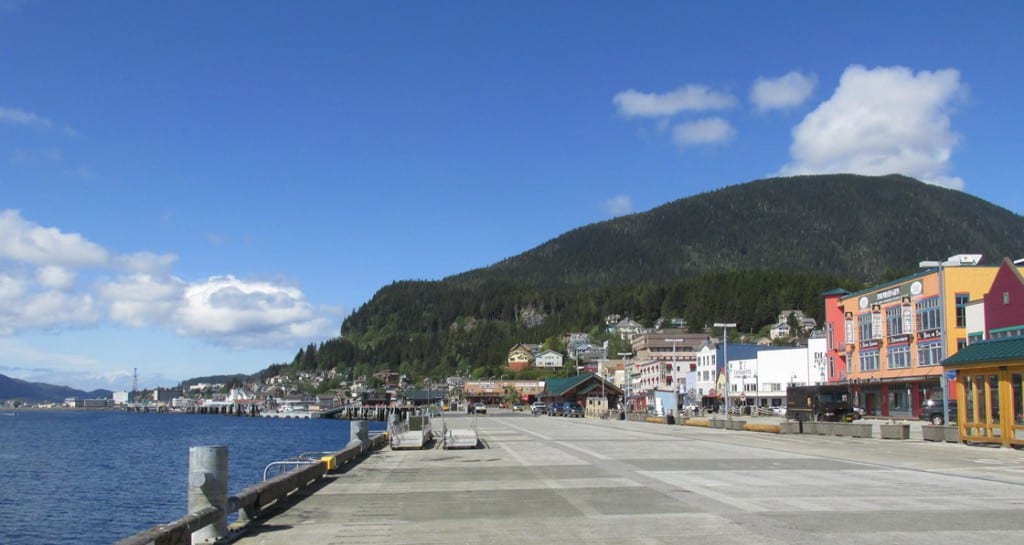
Blasting near Ketchikan’s city-owned downtown docks began at about 12:10 p.m. Tuesday as part of an effort to ease navigation for large cruise ships in the narrow channel. An underwater rock formation makes it difficult for massive cruise ships to get in and out of port.
Pyromaniacs expecting a big boom will likely be disappointed.
“Unless you’re standing right there and ready for it and are aware right when it goes off, people probably aren’t going to feel it,” said Ketchikan Port and Harbors director Steve Corporon, who is overseeing the project.
“You might see some bubbles or a little boil out right at the blast site, but that’s going to be 800 feet off the dock,” Corporon said.
Crews are working to remove a rock pinnacle near Berth II that lies 27 feet below the surface of the Tongass Narrows.
“As the ships have gotten bigger and bigger, it’s not so much that the draft has gotten much deeper, but it’s harder for them to turn, it’s harder for them to maneuver around,” Corporon said.
After Tuesday’s small test blast, Corporon said Tuesday that residents should expect one blast per day, generally between 10 a.m. and 2 p.m. in days to come. After a break between Christmas and New Year’s, crews will return January 3 for about three more weeks of daily blasting and then dredge away underwater debris.
Mariners will have some advance warning. A siren will sound and crews will issue warnings on VHF channels 13 and 16 in advance of the blast to make sure vessels are well clear of the site.
Those radio warnings will be issued two hours, one hour, 30 minutes and 15 minutes ahead of the planned blast. Five minutes before, residents can expect a long, wailing siren followed by a series of short siren blasts 1 minute before the explosion. Another long siren will signal the all-clear about five minutes afterwards.
In addition, Corporon says crews will place transducers — instruments that measure pressure waves — at several sites near the rock pinnacle. Those monitors will make sure the blasts don’t damage anything on land or harm marine mammals, especially whales.
“They’ll be looking out for all the critters out there, both before and after the blast,” he said.
The start of blasting marks the end of a long process: the Ketchikan City Council has been discussing what to do with the navigational hazard since 2017. The council awarded a $5.9 million contract for the project in September of this year.
When the work is completed, Corporon says the seabed will be 42 feet below the average low tide.
Though blasting crews will enforce a 1,500-foot safety zone in the water, Corporon says he doesn’t anticipate that any public spaces on shore will be off-limits during the work.








